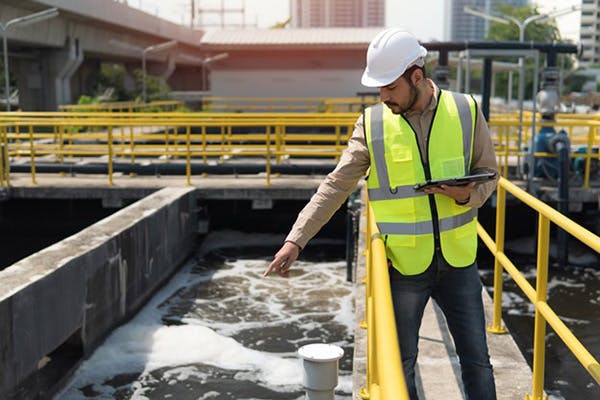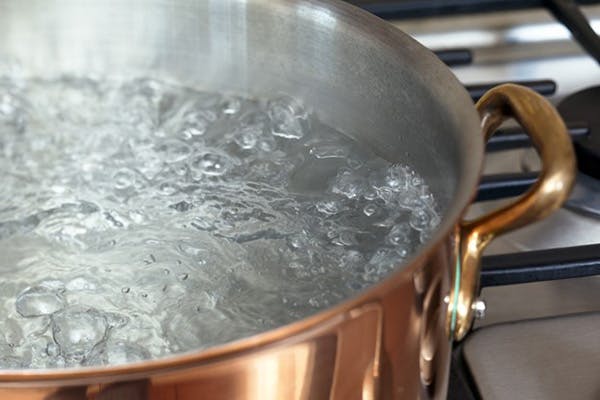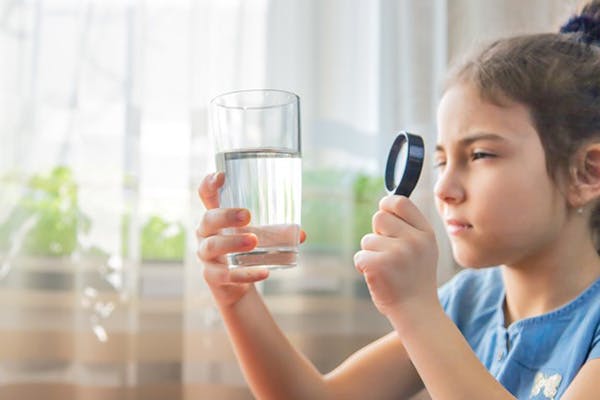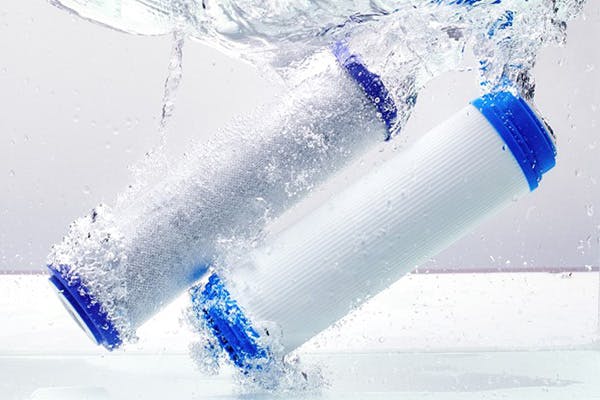🌟 New Arrival! Upgrade Your Water with Our Advanced Pitcher Filter. Shop Now
October 2022
Austin’s Water Quality: What Every Austinite Needs to Know
Clean, clear, healthy water isn’t a luxury — it’s a human need. If you live in the city of Austin, Texas, then you should know about Austin water quality.
We’re here to help you out with that. We’ll take a closer look at the city of Austin’s drinking water to find out where Austin water comes from, and we’ll see what the experts have to say about Austin water quality.
We’ll also look through the different ways you can make sure that the water you drink and use in your home is of the highest water quality available and is free from contaminants that can be found in tap water.
Where Does Austin Water Come From?
Before we take a look at Austin water quality, we should first learn where Austin water is sourced.
Austin’s water comes from the Colorado River in Texas. It’s worth noting that Texas’s Colorado River is different from the much larger and longer Colorado River that originates in Colorado’s Rocky Mountains and travels all the way to the Gulf of California.
The Colorado River in Texas is an important source of water for the Lone Star State. It begins near Lubbock, Texas, and travels southeast to the Gulf of Mexico. Along the way, Texas’s Colorado River runs right through the heart of Texas’s capital, Austin.
As it passes through Austin, three separate water treatment plants — the Berl L. Handcox Sr. Water Treatment Plant, the Albert R. Davis Water Treatment Plant, and the Albert H. Ullrich Water Treatment Plant — pull the river’s water into the city’s water system, providing Austin its water supply.
Is It Safe to Drink Tap Water in Austin?
If left untreated, you might feel negative health effects by drinking source water straight from the Colorado River. This is because a wide variety of contaminants, agricultural byproducts, pesticides, herbicides, and microbial pollutants can find their way into our groundwater and source waters through a process called leaching. Stormwater runoff can even introduce wastewater into our groundwater.
Like most municipal water supplies, Austin’s tap water relies on source water that needs to be treated before it’s safe to drink. So before we make any judgments about Austin water quality and figure out whether or not it’s safe to drink Austin tap water, we need to learn more about Austin’s water treatment process.
How Is Austin Water Treated?
The city of Austin relies on the Austin Water utility company to source and treat the city’s water supply. According to Austin Water, this treatment process typically takes between six and 10 hours and involves six distinct steps.
1. Screening
You can think of this step as a preliminary filtration process. Source water — in this case, water taken directly from Texas’s Colorado River — moves through screens that remove objects like plastics, metals, paper, fabrics, and other trash. Importantly, this treatment process helps protect the rest of the water treatment plant’s systems from these larger contaminants, which are large enough to damage machinery.
2. Coagulation
Screening doesn’t remove all of the solids from source water, though. (They're much smaller than the solids removed from the screening process. For example, muddy water is water with dirt or clay solids suspended in it.) Many of these solids remain suspended in the liquid water, so water treatment plants work to remove these by adding a coagulant.
Coagulants are chemicals that carry a positive charge. This charge neutralizes the negative charge of the suspended solids, causing them to clump together in larger groups called flocs (more on this shortly). This clumping together is where this process gets the name of coagulation.
Some examples of commonly used coagulants are aluminum sulfate, ferric chloride, and ferric sulfate, which is also referred to as aluminum and iron salts.
3. Flocculation
Once the aluminum and iron salts have worked their magic and made flocs of the water’s suspended solids, water treatment plants will often add polymer chemicals to increase the size of these groupings of suspended solids in the water. Alginate, amylopectin, cellulose, chitosan, and starch are some of the most commonly used polymer chemicals used for flocculation.
At this point, the water being treated is also gently mixed to help increase the size of the flocs. With the help of the added polymer chemicals, solids suspended in the water continue to coagulate — ready for the next step in water treatment.
4. Sedimentation
After the source water has gone through the screening, coagulation, and flocculation water treatment processes, the suspended solids have now been drawn together in flocs large and heavy enough that they’ll sink.
This sinking process is called sedimentation. As these solids sink, the rest of the water continues along to the next water treatment process — without all of those contaminants suspended within it.
5. Filtration
Following sedimentation, source water goes through a filtration system to remove any contaminants that evaded previous water treatment processes.
Water treatment plants often filter water through sand, charcoal, and gravel filters, which help remove bacteria, microbial contaminants, heavy metals, parasites, viruses, and bad odors.
6. Disinfection
After filtration, water treatment plants disinfect the water by adding chlorine or chloramine to the filtered water. These chemicals can kill biological contaminants left in the water like bacteria, parasites, and viruses.
It’s common practice for water treatment plants to leave some of these disinfecting chemicals in the water as it leaves the plant. This way, the disinfecting chemicals will help kill any contaminants the water might encounter between the plant and your faucet.
Is It OK to Drink Tap Water in Austin?
After that crash course in municipal water treatment processes, it’s time to revisit the original question: is it OK to drink Austin water straight from the tap?
By the standards set forth from the U.S. Environmental Protection Agency (EPA) and the Texas Commission on Environmental Quality, Austin’s drinking water is safe to drink. These state and federal regulators closely watch Austin’s water supply, and the city’s water typically stays below the maximum contaminant levels the EPA and the state of Texas have set forth.
It’s worth noting, though, that in February 2022 the city of Austin violated EPA water quality standards. The city’s water violated the EPA’s “Long Term 1 Enhanced Surface Water Treatment Rule,” and Austin Water issued a boil water notice the same month (more on this in a moment).
Generally speaking, though, Austin’s water is — most of the time — safe to drink. Whether that’s good enough for you and your family is something you’ll have to decide for yourself.
Why Did Austin Have to Boil Water?
Municipal water utilities will, on occasion, issue boil water notices or advisories to residents if there is concern of contamination in water that has already left the water treatment plant and made it to the taps of local residents.
This occurred in Austin in February 2022 when employees at the Albert H. Ullrich Water Treatment Plant noticed higher than normal levels of turbidity (or cloudiness) in the plant’s water.
Austin Water’s director would go on to identify employee error as the source of this increased turbidity. He said that employees “did not appropriately respond to deteriorating plant conditions despite logs and multiple alarms,” leading to the water treatment plant’s turbidity problem.
Although the boil water notice was lifted after three days, this was the third such boil water advisory since 2018, which experts say is an abnormally high rate for a city like Austin.
Needless to say, if you live in Austin, you’ll want to stay current with local Austin news media for information about any additional boil water advisories in the area. These are supposed to be rare occurrences, but recent events suggest otherwise in the Texas capital.
How Can I Improve My Austin Water Quality?
Although you can be reasonably confident that the tap water coming out of your Austin faucet meets public health guidelines, there are two ways you can improve your Austin water quality:
Buy Lots and Lots of Bottled Water
One option is bottled water. The bottled water you buy at the store goes through more rigorous filtration processes than tap water, and it’s a reliably cleaner option than Austin water.
Replacing tap water with bottled water brings its own challenges, though. Bottled water is expensive! Replacing all of your drinking water with bottled water can cost you more than $2,000 every year. If you’re buying bottled water for multiple people in your household, that cost can quickly spiral out of control.
Bottled water is also damaging to the environment. If this is something that you care about, then this may not be the best alternative to drinking Austin tap water.
Install a Home Filtration System
The best way to improve your Austin water quality and protect your home’s water resources is to install some sort of home filtration system.
We’ve seen how water is treated by the city of Austin before it comes out of your tap, but we’ve also seen that Austin Water employees have made critical mistakes in treating this water. Additionally, we’ve learned that water treatment plants often intentionally leave chemicals like chlorine and chloramine in the water they send out to residents, which means these chemicals could be in your tap water.
Finally, consider the fact that the pipes between Austin’s water treatment plants and your Austin home or business are further sources of contamination from bacterial growth or maybe even lead. Even if the city of Austin is able to perfectly clean the water it takes from the Colorado River 100% of the time, the water coming out of your faucet could still be dirty.
This is where home filtration systems come in. By filtering water in your own home, you give yourself the peace of mind that the water you and your family are drinking is clean, safe, and healthy.
What’s the Best Home Filtration System for My Austin Water?
If you’re serious about improving your home’s water quality, there are two excellent options for home filtration.
If you’d prefer a home filtration system that’s easier to install (and requires less hardware), consider an Under Counter filtration system. These systems are installed directly under your sink, and they filter every drop of water that comes out of that faucet.
But if you’d prefer to filter the water throughout your home, consider investing in a Whole Home water filtration system. These systems require a more robust installation, and they filter your entire house’s water supply. With a Whole Home water filtration system, you’ll not only be drinking clean water, you’ll be bathing in clean water, brushing your teeth with clean water, and even washing your clothes with clean water.
HomeWater makes some of the industry’s best home filtration systems, and its customer service representatives can help you pick the perfect filtration system for you and your family. Whether you choose a HomeWater Under Counter system or a HomeWater Whole Home system, you’ll be upgrading your Austin water quality in a major way.
Brought to you by homewater.com
All images licensed from Adobe Stock.





